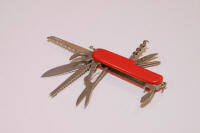Communication

you know all the words, and you
sung all the notes, but you never quite learned the song
The Hedgehog's Song, Incredible String
Band, 1967
 |
Form, function, meaning |
There's more to learning a language that learning its words and
its grammar. Much more.
What we are talking about is form, function
and meaning.
- form
- refers to the grammar, the words and the pronunciation of the language (as well as peripherals like its alphabet).
- function
- refers to things we actually do with language like asking for help, offering help, saying something isn't true, inviting people and so on.
- meaning
- arises from a combination of the two, as we shall see.
 |
One form can have different functions |
For example:
| This language ... | ... could mean |
| It's cold in here | Please shut the window (a
request) Please turn on the heating (a different request) This is the reason I'm getting my coat (an explanation) I'm not comfortable (a complaint) |
| Are you very busy? | I want to know if you are busy
(a real question) I need some help (a statement of fact) I want you to do something for me (a request for action) I think you are time wasting (a reprimand or criticism) |
You can see from these examples that one form can have more than one meaning.
 |
Task 1:
If this is true, how on earth do we choose the right
form to realise the function? Well, how do we? Think for a minute and then see the answer. |
- Contextual information and Shared knowledge
- If we both know that I am working on something and you aren't doing very
much, the Are you busy? will be understood as a request for help.
If you are the boss and I am just sitting at my desk playing games on a
computer, we will both know that it is meant as some kind of reprimand.
All the other meanings set out above can be figured out only if we know who is talking to whom and what their communicative intentions are.
 |
One function can take different forms |
The other side of the coin is that we can use a number of forms to 'realise'
the same function. If I want to advise you, I can say:
You
should
You ought to
Do you think it wouldn't be a good idea to ...?
etc.
Here's another set of examples.
| This function ... | ... could be achieved by ... |
| I want you to close the window | Please shut the window
(a polite order) It's cold in here (a statement) Do you think we could have the window shut? (a complex question) |
| I want to get your help with something | Are you very
busy? (a question form) Can you give me a hand? (a question form) I'm having trouble with this (a statement) Do me a favour (an order) |
 |
Task 2: If this is true, how on earth do we choose the right
form to realise the function? Well, how do we? Think for a minute and then see the answer. |
- Intention
- Do I want to be polite, rude, deferential, explicit, vague? etc.
I can choose appropriately from:
Open the damn window!
Please open the window
I wonder if you would mind if we had the window open
Do you think we could let some air in?
etc. - Context and setting
- How much shared information is there?
If we can see each other and you know I am struggling to do something, then just saying
Have you got a minute?
may be enough to express my intention.
If I am in a different place or at a different time (e.g., writing you a letter or a message or leaving a message on an answering machine), I will have to be much clearer and include more information. - Relationships
- If one party is more powerful than the other then different language is employed.
Asking someone to get on with their work could take the form of
Are you busy?
Get some work done, will you?
and so on.
 |
How many functions are there? |
Lots. However, it's quite easy to find lists which include
items such as giving / getting permission, asking for and giving
factual information, apologising and accepting apologies, expressing
hopes and wishes and so on.
Two key publications are from the Council of Europe and are available on
the web:
Waystage 1990 by Van Ek and Trim
Threshold 1990 by Van Ek and Trim
Waystage contains a long list of functions and notions for lower levels
and Threshold does the same for more advanced learners.
 |
Teaching implications |
 |
 |
Task 3: Think what these might be. Try to find an implication for each of the three factors (intention, context and relationship) and then compare your list. |
- Intention:
We can only introduce and practise language successfully if the learners are aware of what they want to do with the language and how they want to appear. - Context and setting:
You can't learn, use or understand language in a vacuum. When introducing or practising language forms we need to set a clear context and the learners also need to know where, with whom and when they are using the language. - Relationships and roles:
In the classroom, relationships between the teacher and the learners and between learners are often informal and equal. Outside, in the real world, that's often not the case so we need to set up scenarios in which learners can practise choosing the appropriate language.
 |
Adjacency pairs |
Functions often come in pairs, because one function often requires its counterpart(s). For example, asking for someone's name is a useful function to control but less so if you don't know how to respond by introducing yourself. Here are some more:
| apologising | accepting or rejecting apologies |
| asking for permission | granting or denying permission |
| asking directions | giving directions |
| expressing anger | placating |
and, of course, it makes sense to teach and practise them
together. There's not much point in being able to ask for
permission 3 different ways if you are unlikely to understand the response.
If you would like a list of some common adjacency pairs,
click here.
|
|
Task 4: Take the test. |
 |
Learn more about communication |
